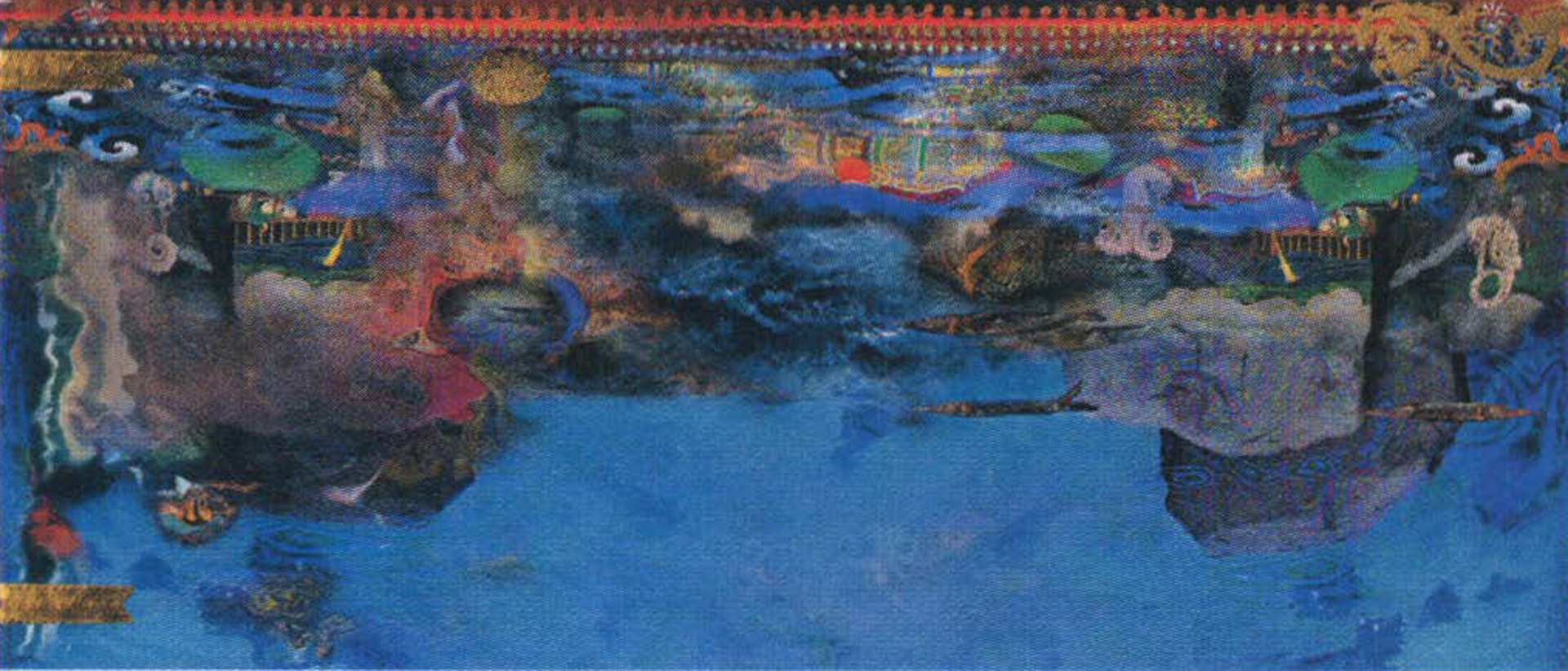Phillip George: Waterworks
Artist(s):
Title:
- Waterworks
Exhibition:
Creation Year:
- 2000
Medium:
- C Type Color Print,
Size:
- 64 cm x 150 cm
Category:
Keywords:
Artist Statement:
The “Waterworks” image exhibited in this years SIGGRAPH “N Space” Art show is from a file started in 1990. There have been several descendants of the file previously exhibited at SIGGRAPH art shows. They have taken many forms, including installations, interactive installations, and various types of prints:
“Touch ware” SIGGRAPH 98 Art show, Orlando Florida – work title “Towards the Event Horizon”; “Ongoings” retrospective SIGGRAPH 97 Art show, Los Angeles – work title “Tangent @23”; “The Bridge” SIGGRAPH 96 Art Show, New Orleans – work title “Mnemonicon 4”; “Art Show” SIGGRAPH 95 Los Angeles – work title “Mnemonic Notations” interactive CD-ROM; and SIGGRAPH Art Show McCormick Place, Chicago – work title “Headland Mnemonic Notations.”
This ongoing format of file modification has served to frame particular interests of mine pertinent to the time of modifying the file/image: the visual diary.
The “Waterworks” image draws upon a developing interest in the fluidity of memory. And the water-like quality of memory in “Waterworks.” The mnemonic detritus washes up towards the top side of the image bobbing around, some detritus rising to the surface and some sinking out of vision and memory. Forming a dam at the top of the image are the roof tops of the Forbidden City, captured from Tiennamin Square New Years Eve 2000, another addition to the diary.
An apparition appears on the rocks of a coastline. The coastline images literally take the idea of the mind’s double take. On the rocks, icons appear, washed up either in the distant past or perhaps just for a moment in the present; only just discernible on the rocks leading us to question the reality of what we might see, or in-fact if we have seen; validating the reality of the image surface are questioned.
There are layers of influence and layered ways of perception at work within the image. Notions of the digital as fiction arise, documentation as illusion, illusion as document, and ultimately illusion as history. Is illusion the future of history in a digital age? Or has history always been an illusion?
Other issues surface, from within the work: Australia as a majority coastal society, living on the edge of a vast, hot and largely empty space. The edge of the Australian continent is seen to act like a sponge absorbing the latest arrivals. Flung upon the beach, wave after wave, tide upon tide, visitors find a foothold, collect themselves, leave a marking, and blend into the grains of the coastline, icons and artifacts left embedded into the rock, monuments to a passing.
These pasts push other histories through the coastline mutating past to present. Time as sedimentation is documented and sedimentation of time documented.
This work arrives from out of the south pacific it is work geographically placed at the intersection of land and water in an area of transition. Here the water is navigated with just the same familiarity as land, there a pathways sign posts steams within streams all fluidly interacting. The interface of vision, the multiple methodologies of mapping the world are under investigation here. What is it that we use to reliably negotiate a fluid space?





